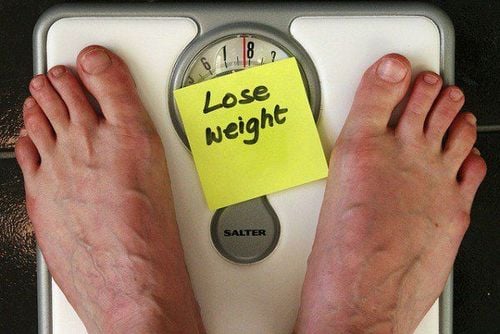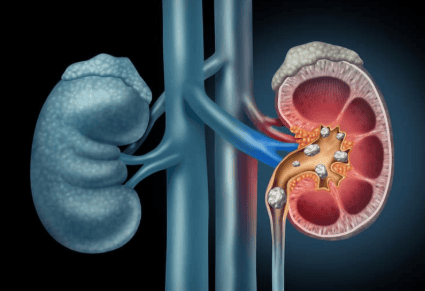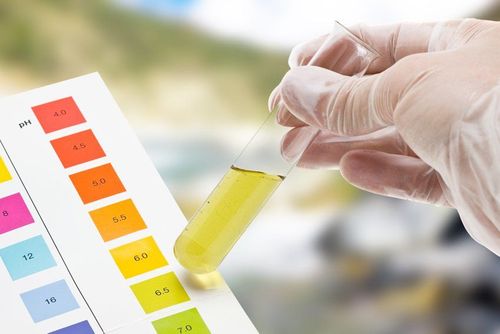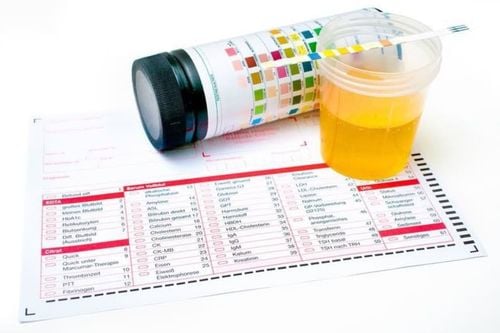This is an automatically translated article.
Urinalysis is used to detect a variety of disorders such as urinary tract infections, kidney disease and diabetes. Urinalysis includes checking for the presence and concentration of substances in the urine. Abnormal urinalysis results can be a sign that you have a medical condition. Below are the indicators in a urine test and what they mean.
1. SG (Specific Gravity – Specific Gravity)
Meaning: It is a sign to help assess the urine is dilute or concentrated (due to drinking too much water or due to lack of water); Normal index: 1.015 - 1.025; Prevalence is increased in diabetes, decreased in diabetes insipidus. Persistent low density is also common in renal failure.
2. LEU or BLO (Leukocytes – White blood cells)
Meaning: It is a sign to help detect urinary tract infection. If the urine biochemical test result is positive, it means a urinary tract infection, need to clean and drink plenty of water; Normal: Negative; When the urine test contains white blood cells, the pregnant woman may have a bacterial or fungal infection (values suggestive of UTI but not confirmed). In the process of fighting invading bacteria, some red blood cells have died and are excreted in the urine. You need a nitrite test to determine the type of bacteria causing the infection.3. NIT (Nitrite – Compound produced by bacteria)
Meaning: Is a sign of urinary tract infection; Normal: Negative; Bacteria that cause urinary tract infections produce an enzyme that converts urinary nitrate into nitrite. Therefore, if the urine test results show nitrite, it means that there is a urinary tract infection. If positive, there is an infection, especially type E. Coli.4. pH (Acidity)
Meaning: Assess the acidity of urine; Normal: 4.6 - 8; Used to assess whether urine is acidic or basic. When pH=4 means that the urine is strongly acidic, pH=7 is neutral (neither acid nor basic) and pH=9 means the urine is strongly basic; When urine test pH increases, it means kidney infection (increased or sometimes decreased), chronic renal failure, pyloric stenosis, vomiting; reduced in diabetic ketoacidosis, diarrhea and dehydration.
Xét nghiệm nước tiểu pH giảm khi nhiễm ceton do tiểu đường, tiêu chảy mất nước
5. Blood (BLD)
Meaning: Is a sign to help detect urinary tract infection, kidney stones, or bleeding from the bladder or kidney tumor; Normally none; Inflammation, disease, or damage to the kidneys, ureters, bladder, or urethra can cause blood in the urine.
6. PRO (Protein)
Signs of kidney disease, blood in the urine or urinary tract infection, helping to detect pre-eclampsia in pregnancy; Normally none; If the urinalysis detects protein in the urine, the condition of the pregnant woman may be related to the following: dehydration, test sample contains mucus, urinary tract infection, high blood pressure, kidney problems ... At the end of pregnancy, if the amount of protein in the urine is high, pregnant women are likely to have preeclampsia, blood poisoning. If you have swelling in your face and hands, and gestational hypertension (140/90 mmHg), you should be checked for preeclampsia right away. In addition, if albumin (a protein) is detected in the urine, it is also a warning sign that the pregnant woman is at risk of pregnancy toxicity or diabetes.7. GLU (Glucose – Sugar)
Meaning: It is a common sign in diabetic patients. Glucose appears in the urine when the renal threshold is decreased or there are renal tubular diseases, diabetes, pancreatitis, glucoseuria due to diet; Normally absent or possible in pregnant women; It is a type of sugar found in the blood. Normally, there is no or very little glucose in the urine. When blood sugar is very high, for example in uncontrolled diabetes, the sugar is released into the urine. Glucose is also found in the urine when the kidneys are damaged or diseased; If you eat a lot of sweet foods before your urine test, an increase in glucose in your urine is normal. But if the sugar level on the second urine test is higher than the first, this is a warning sign that you are at risk of diabetes. If you are accompanied by fatigue, thirst, and weight loss, you should visit your doctor to have your blood sugar checked.
Sụt cân có thể là biểu hiện của tiểu đường
8. ASC (Urine Sedimentoscopy)
Meaning: As a marker to help detect cells in kidney infections, urinary tract, urinary tract stones...; Urinalysis to evaluate kidney disease; Normal readings: 5-10 mg/dL or 0.28-0.56 mmol/L.
9. KET (Ketone – Ketone)
Common signs in patients with uncontrolled diabetes, low-carbohydrate diets, alcoholism, long-term fasting; Normally absent or sometimes low in pregnant women; Normal readings: 2.5-5 mg/dL or 0.25-0.5 mmol/L; This is a substance excreted in the urinary tract, a sign of pregnant women and fetuses being undernourished or having diabetes; If the urine test results detect the amount of ketones, accompanied by signs of loss of appetite, fatigue, the pregnant woman should be prescribed intravenous fluids and medication by the doctor. To fully reduce the amount of ketones, pregnant women should relax, rest and try not to skip any meals.10. UBG (Urobilinogen)
Meaning: It is a sign to help detect cirrhosis, hepatitis caused by infection, virus, congestive heart failure with jaundice...; Normally none; This is a product of the breakdown of bilirubin. It is also eliminated from the body in the feces. Only small amounts of urobilinogen are present in the urine. Urobilinogen in the urine can be a sign of liver disease (cirrhosis, hepatitis) that blocks the flow of bile from the gallbladder. Urinalysis usually does not provide a definitive diagnosis. Your doctor may evaluate your urinalysis test results along with other tests — or order more tests — to determine next steps. If the urine test index exceeds the normal value, you need to consult a doctor for timely and proper treatment.If you have a need for consultation and examination at Vinmec Hospitals under the national health system, please book an appointment on the website (vinmec.com) for service.
Please dial HOTLINE for more information or register for an appointment HERE. Download MyVinmec app to make appointments faster and to manage your bookings easily.













